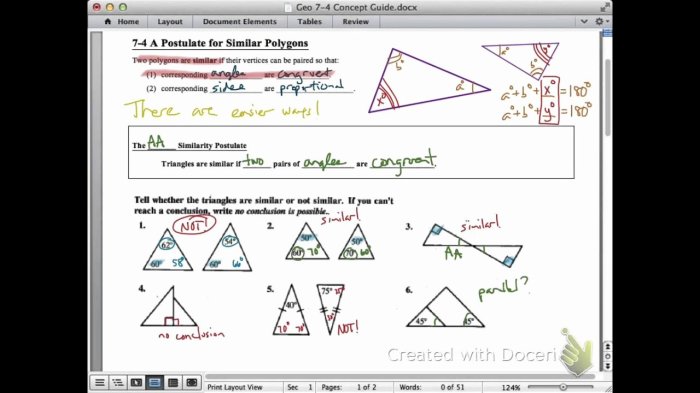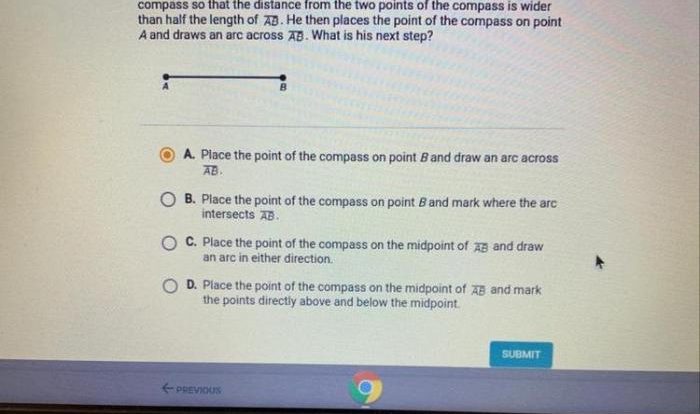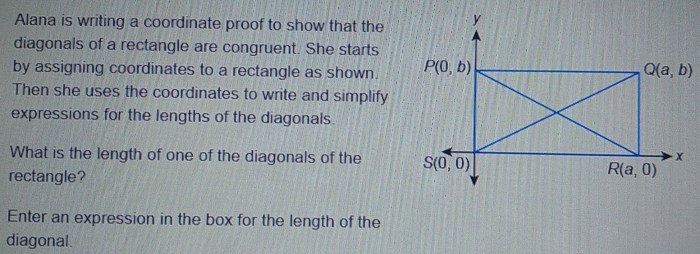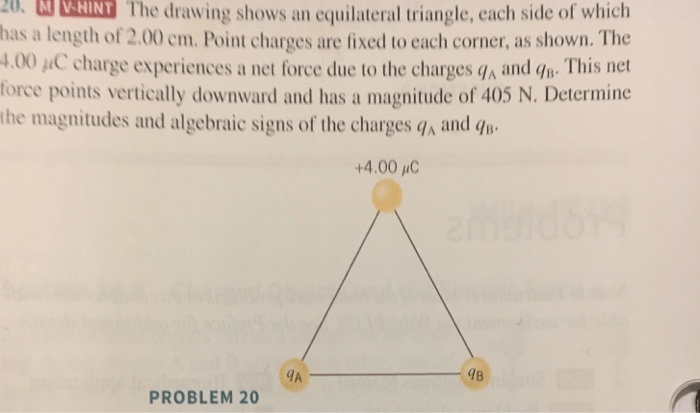Embark on a comprehensive journey through Lesson 11.2 Practice A Geometry Answers, a meticulously crafted resource that unveils the intricacies of geometric concepts and their practical applications. Delve into the realm of angles, polygons, and transformations, gaining a profound understanding of their properties and relationships.
This in-depth exploration provides a solid foundation for further exploration in geometry, empowering learners with the knowledge and skills to tackle complex geometric problems with confidence.
Geometric Concepts and Terminology
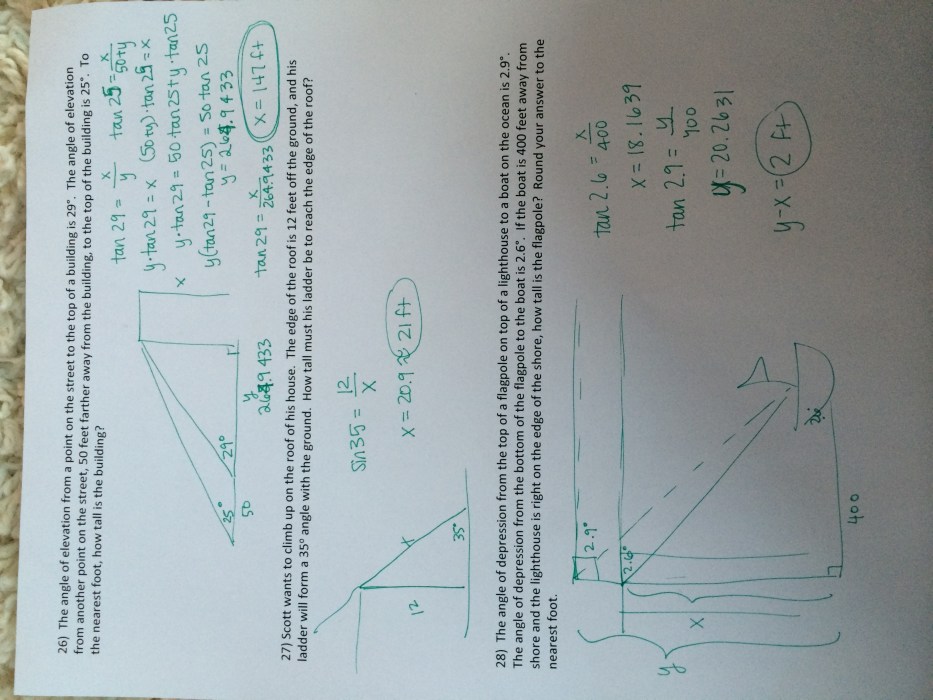
Geometry is a branch of mathematics that deals with the study of shapes and their properties. Basic geometric concepts include angles, polygons, and circles.
Angles
- Angles are formed by two rays that share a common endpoint called the vertex.
- Angles are measured in degrees (°) or radians (rad).
- There are different types of angles, including acute angles ( <90°), right angles (90°), obtuse angles (>90°), and straight angles (180°).
Polygons
- Polygons are closed figures formed by three or more line segments that intersect only at their endpoints.
- Polygons are classified by the number of sides they have, such as triangles (3 sides), quadrilaterals (4 sides), and pentagons (5 sides).
- Special types of quadrilaterals include parallelograms, squares, rectangles, and trapezoids.
Circles, Lesson 11.2 practice a geometry answers
- A circle is a closed curve formed by all points that are equidistant from a fixed point called the center.
- The radius of a circle is the distance from the center to any point on the circle.
- The diameter of a circle is the distance across the circle through the center.
Angle Relationships and Properties
Angles have certain properties and relationships that can be used to solve problems.
Supplementary and Complementary Angles
- Supplementary angles are two angles that add up to 180°.
- Complementary angles are two angles that add up to 90°.
Vertical Angles
- Vertical angles are two angles that are opposite each other and formed by two intersecting lines.
- Vertical angles are always congruent (equal).
Angle Bisectors
- An angle bisector is a line or ray that divides an angle into two equal parts.
- Angle bisectors have certain properties, such as being perpendicular to the line containing the angle.
Polygon Properties and Relationships

Polygons have various properties and relationships based on their shape and number of sides.
Triangles
- Triangles are classified as equilateral (all sides equal), isosceles (two sides equal), or scalene (no sides equal).
- The sum of the interior angles of a triangle is always 180°.
- The exterior angle of a triangle is equal to the sum of the opposite interior angles.
Quadrilaterals
- Quadrilaterals are classified as parallelograms (opposite sides parallel), squares (all sides equal and all angles right angles), rectangles (opposite sides parallel and all angles right angles), and trapezoids (one pair of opposite sides parallel).
- The opposite angles of a parallelogram are congruent.
- The diagonals of a parallelogram bisect each other.
Relationships between Sides, Angles, and Diagonals
- The sum of the interior angles of an n-sided polygon is (n-2) x 180°.
- The number of diagonals in an n-sided polygon is (n-3) x n/2.
- The diagonals of a regular polygon bisect each other.
Perimeter and Area of Polygons: Lesson 11.2 Practice A Geometry Answers
Perimeter and area are two important measurements associated with polygons.
Perimeter
- The perimeter of a polygon is the sum of the lengths of all its sides.
- Formulas exist for calculating the perimeter of different types of polygons, such as triangles, quadrilaterals, and circles.
Area
- The area of a polygon is the amount of space it encloses.
- Formulas exist for calculating the area of different types of polygons, such as triangles, quadrilaterals, and circles.
- The area of a polygon can be used to solve problems involving its shape and size.
Coordinate Geometry
Coordinate geometry is a system for representing points and shapes on a plane using numbers.
Coordinate Plane
- The coordinate plane is a two-dimensional surface divided into four quadrants by the x-axis and y-axis.
- Points on the coordinate plane are represented by ordered pairs (x, y), where x represents the horizontal distance from the origin and y represents the vertical distance from the origin.
Plotting Points
- To plot a point on the coordinate plane, find the point’s x-coordinate and y-coordinate and move that many units along the x-axis and y-axis, respectively.
- The point is located at the intersection of the horizontal and vertical lines drawn through these points.
Properties of Lines
- Lines can be represented by equations of the form y = mx + b, where m is the slope and b is the y-intercept.
- The slope of a line is a measure of its steepness.
- Parallel lines have the same slope, and perpendicular lines have slopes that are negative reciprocals of each other.
Transformations

Transformations are operations that change the position or shape of a geometric figure.
Types of Transformations
- Translations move a figure from one location to another without changing its size or shape.
- Rotations turn a figure around a fixed point by a given angle.
- Reflections flip a figure over a line of reflection.
Performing Transformations
- To perform a translation, add the same amount to the x-coordinate and y-coordinate of each point in the figure.
- To perform a rotation, rotate each point in the figure around the fixed point by the given angle.
- To perform a reflection, flip each point in the figure over the line of reflection.
Properties of Transformations
- Translations preserve distance and angles.
- Rotations preserve distance and angles, but they can change the orientation of a figure.
- Reflections preserve distance, but they can change the orientation of a figure and reverse the order of the points.
Key Questions Answered
What are the different types of angles?
Angles are classified into various types based on their measure: acute angles (less than 90 degrees), right angles (90 degrees), obtuse angles (greater than 90 degrees but less than 180 degrees), and straight angles (180 degrees).
How do you calculate the area of a triangle?
The area of a triangle can be calculated using the formula: Area = (1/2) – base – height.
What is a transformation in geometry?
A transformation in geometry is an operation that moves a figure from one position to another without changing its size or shape. Common transformations include translations, rotations, and reflections.
